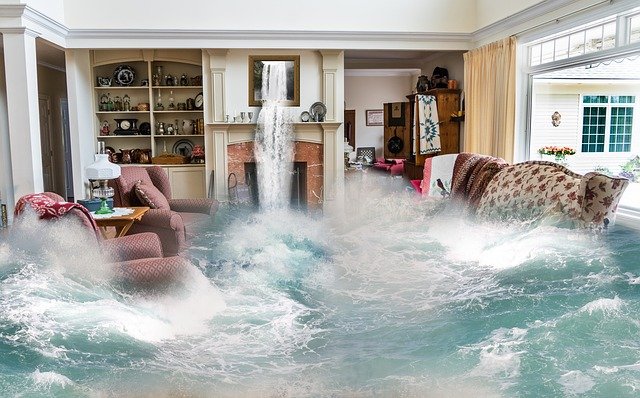One of the most beautiful things about living on this planet is the regularity with which seasons come and go. Every single year for as long as humans can remember, the rainy season comes. Following in the wake of those rains are a lot of good things and, sometimes, a few bad things.
The rains create the environment we need for our food to sprout and also feed the underground rivers where we get our water. But the same rain that turns nature into a lush paradise can ruin homes. The rainy season is synonymous with flooding, not only in fields but also in homes.
The rains will certainly come and go, but you want to be sure that after the rainy season is gone, your home will be as it was before the rains came. You wouldn’t want floodwater getting into your house and leaving you with mountains of bills to pay or even endangering your family’s life.
That blessing of rain from the skies can also become a curse of floodwater inside your home unless you take the right steps, warns Sun-Pro Realty & Management. Don’t forget that the stress and expenses of fixing water damage are nothing compared to the small steps you can take to prevent flooding in your home.
That bears repeating; flood prevention is many times more inexpensive than the cost of restoring your home after it has been hit by a flood. How can you prevent your home from becoming flooded this rainy season? Here are tips you can follow to keep your property safe when it rains.
8 tips to help you prevent flooding in your home
Improve drainage by grading the area around your home
Water naturally flows from high ground to low. If the ground near the foundation of your home is lower than the surrounding areas, you will have flooding in the basement. Take note of the direction that water flows when it is on your property and areas where floodwater accumulates around the home.
Make sure the ground around the base of the house slopes down to the street. Add dirt and sod to make the ground higher, if necessary.
Inspect and clean downspouts and gutters
Downspouts collect rainwater from the gutters around your roof and discharge it into a part of the property where it won’t flow back into your home. But downspouts and gutters will only play their role if they are not clogged with debris or damaged.
Make a habit of inspecting and cleaning your gutters and downspouts regularly, particularly if there are lots of trees around your home.
Test your sump pump on a schedule
The sump pump is supposed to automatically remove floodwater that finds its way into your basement. This system is designed to work without your direct involvement, but sump pumps can fail.
You may not realize that your sump pump has stopped working until your home is unexpectedly flooded. You can avoid this by doing scheduled tests of the sump pump and installing a backup battery system.
Keep storm drains free of debris
Any debris you let scatter around your yard can find its way into the storm drain when it rains. Blocked drains on your property or the street will predispose your home to floods.
All storm drains on your property are your responsibility to clean and maintain. You should also inform the city department responsible for cleaning the city’s drains if a storm drain on the street is posing problems.
Clean clogged drains after heavy rains
Even if you keep your yard free of debris, your drains can still get clogged with debris transported from the areas surrounding your home. After heavy rains, you should check your drains to make sure they are not clogged with debris. This is a lot of trouble to go through but it is a lot less than what you will have to endure if your home gets flooded.
Install a backflow prevention device
A backflow prevention device ensures that if during heavy rains, your home’s sewer systems are overwhelmed, water does not back up into your home. If there is no backflow device installed in your home, you can end up with a lot of unpleasant material inside your house. A backflow device will save you the distress and cost of dealing with this kind of situation.
Protect your home with sandbags
If the home is in an area with a high risk of floods, you can reduce your home’s exposure to floodwaters by placing sandbags in those areas where the risk is highest. Sandbags are an effective way to redirect the flow of water and keep it from going where you don’t want it to. When using sandbags, pay close attention to the slope of the ground to avoid trapping the water, instead of redirecting it.
Install flood detection systems
Lastly, flood detection systems reduce your burden by taking over the work of keeping an eye on every part of your home for signs of flooding. Flood detection systems have become very advanced, and you can integrate them into your home security system or install them as a standalone system.
